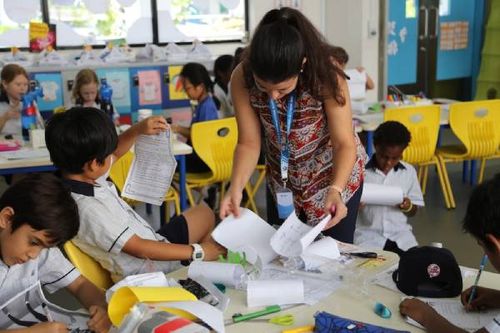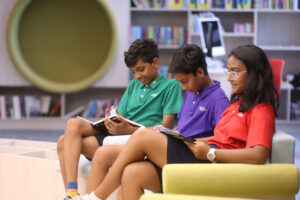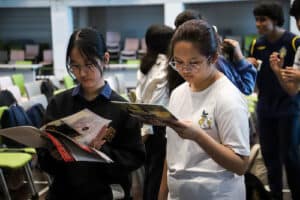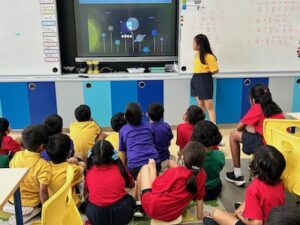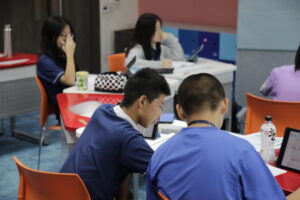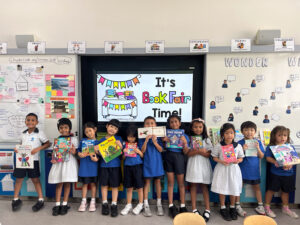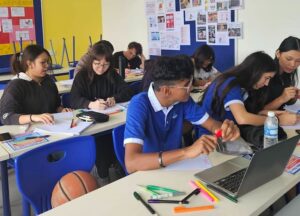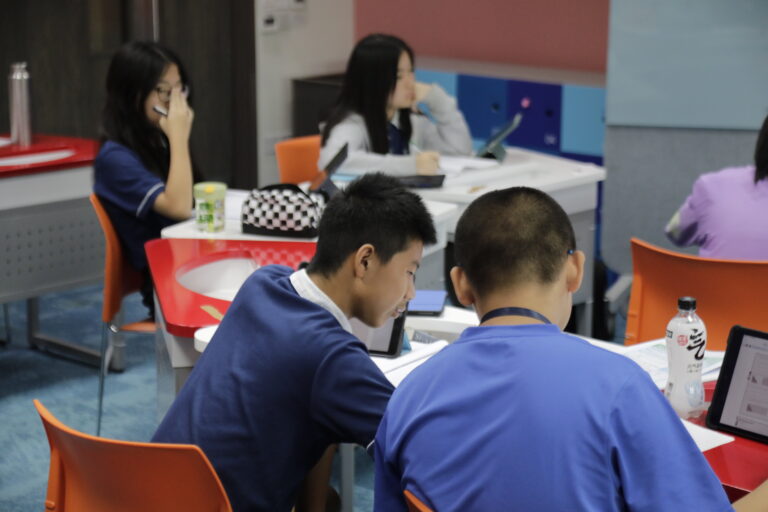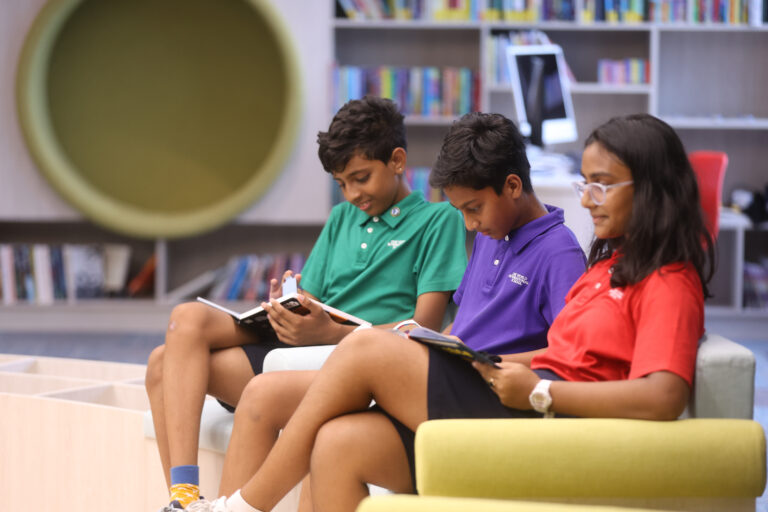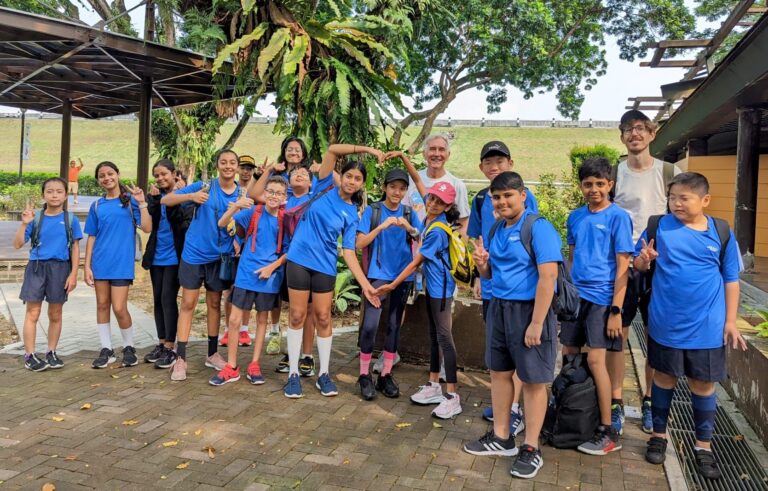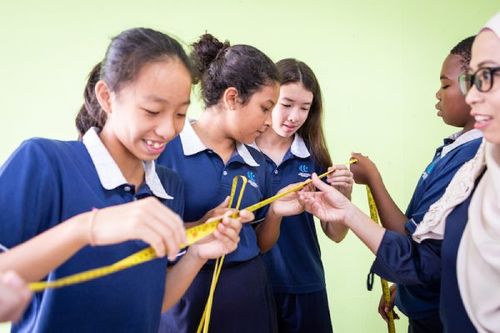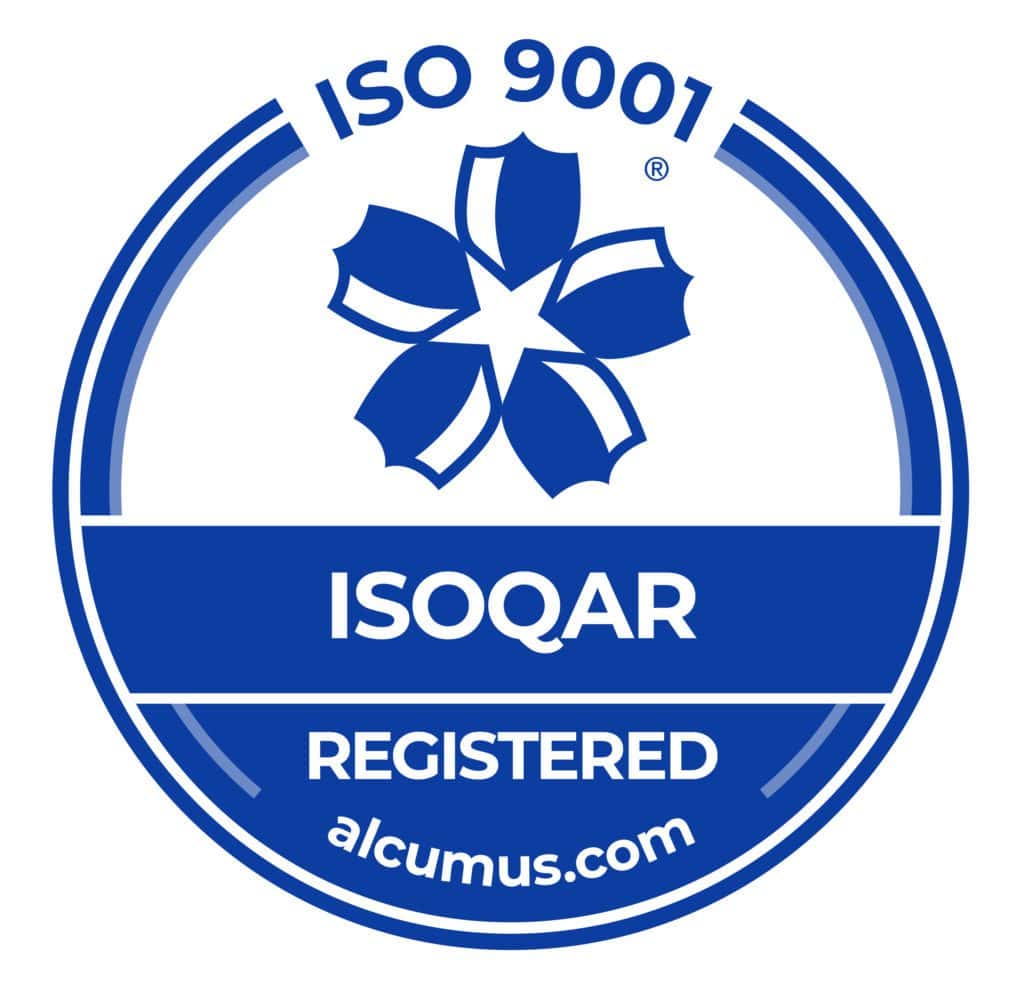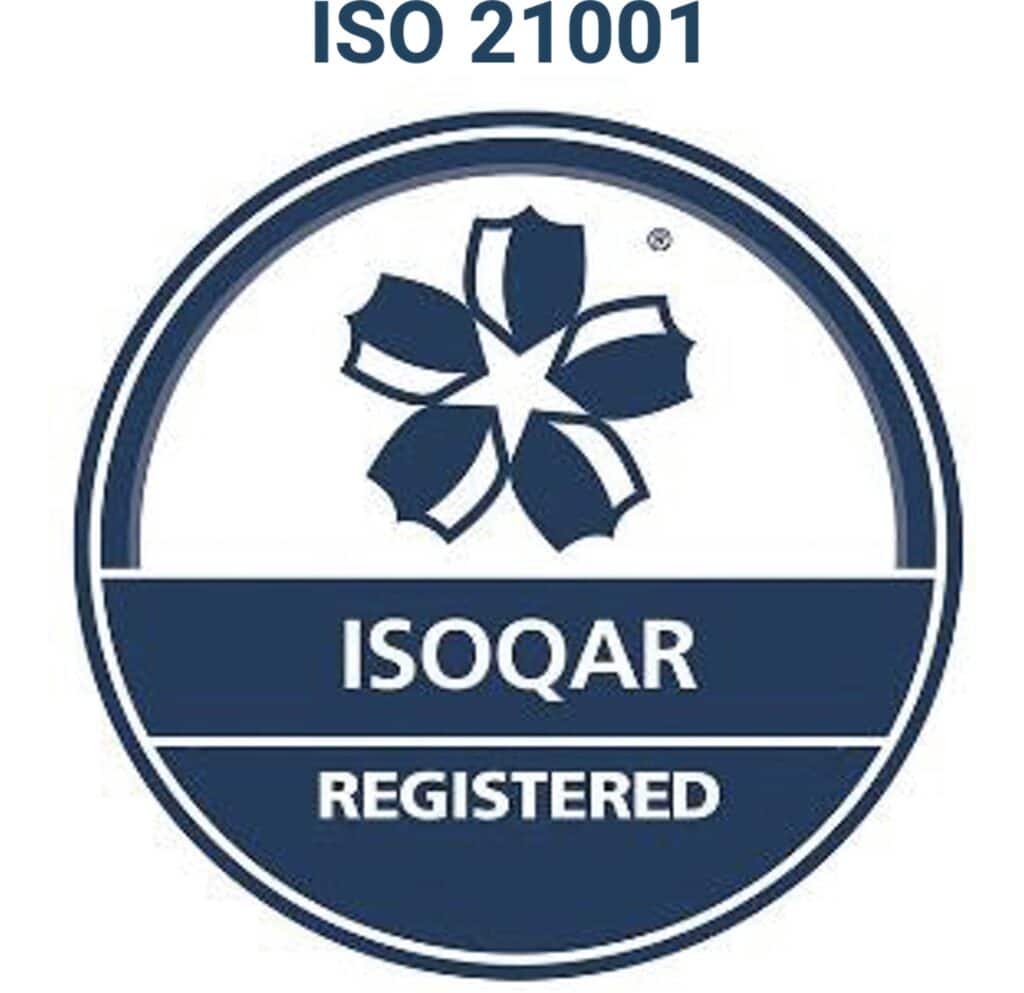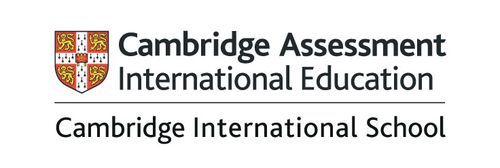Imagine a teacher placing an orange on your child’s desk and asking them to explain what they see. In many classrooms, the correct answer would be, “I see an orange.” However, in a One World International School (OWIS) classroom, “I see an orange” is only the beginning. OWIS instructors use a methodology called Visible Thinking Routines (VTRs) to help your child understand what they see and experience in greater depth.
An orange is an orange until you begin examining it, holding it, smelling it, peeling it, and pulling it apart into sections. And then there’s the way an orange tastes. If you fail to examine the orange in greater detail, you’ll miss out on its sweet, tangy flavour. Next, there’s the question of what you can do with an orange. You can certainly eat it. You can juice it, too. Perhaps you can even use the orange to make other things: marmalade, food colouring, or a household cleaner. There’s much to learn about an orange, but in many classrooms, the simplest answer, “I see an orange” is acceptable.
Students at OWIS never stop at what they see. Instead, they learn to use a set of definable concepts called Visible Thinking Routines to explore the object or topic before them. In this way, they learn how to think about it, instead of merely memorising dates and names.
How are Visible Thinking Routines used in Classrooms?
Visible Thinking Routines promote critical thinking skills in your child. They function in several ways:
VTRs as Tools
At their most basic level, VTRs function as tools educators use to encourage deep reasoning in their students. Just like any tool, you need the right one for the job. This means the Visible Thinking Routine, or tool, being used is for a specific purpose. This could be to help children develop better research skills, to help them question what they currently believe, or to draw intelligent conclusions from the evidence presented.
VTRs as Structures
When you think of Visible Thinking Routines as structures, it’s helpful to envision a scaffold. Scaffolds are structures built from the ground up. They help workers advance quickly to the next, or more advanced, level. This is what VTRs are designed to do. They build a ladder within your child’s mind that connects levels of thinking. Using VTRs, your child begins at the bottom, or most superficial, level of thinking and uses the scaffold to climb to more advanced levels of thought.
VTRs as Patterns of Behaviour
Over time and with practice, the VTRs your child uses daily become patterns of behaviour. This means children eventually use them without having to do so consciously. Routine becomes a habit, and habit becomes a pattern.
Visible Thinking Routines target different ways of thinking, accordingly. Some VTRs require students to work with others, promoting collaboration and many help students learn to develop theories which they then strive to prove right or wrong.

Benefits of Visible Thinking Routines
The Visible Thinking Routines at OWIS
OWIS instructors use core Visible Thinking Routines to help your child become more aware of their thinking processes. In this way, students become accustomed to questioning what they know. Encouraging students to push through boundaries and explore topics, instead of just memorising them, are prime responsibilities of every teacher at OWIS. Each VTR serves a different purpose, and each requires students to learn new skills and to develop new ways to think about the topic at hand. Reasoning, collaboration, research, questioning and exploration are only a few of the skills your child will master as they practice Visual Thinking Routines at OWIS.

How Visible Thinking Routines Are Introduced at OWIS
Children who learn about the world using Visible Thinking Routines train their minds to do more than memorise. They learn to challenge pre-existing concepts, to consider other viewpoints, and to take active roles in how they choose to learn about the world. At OWIS, Visible Thinking Routines are a regular part of the curricula in our Primary Years Programme, using activities such as:
- Give 3: Students offer three types of feedback regarding another student’s work, including one positive, one that needs further explanation and one suggestion for improvement.
- Peel the Fruit: Students peel back the layers of a topic to gain a deeper understanding.
- See Think Wonder: Students learn to observe and interpret a topic or situation.
- Tug of War: Students choose both sides of a topic and collect information to prove each viewpoint.
Visual thinking routines at OWIS promote critical thinking skills in your child. With regular practice, they’ll become patterns of behaviour that benefit students for life. To learn more about the advantages your child will have in our Primary Years Programme at One World International School, take our virtual tour today.
Please note: All the images in this blog were taken in pre-Covid times.

